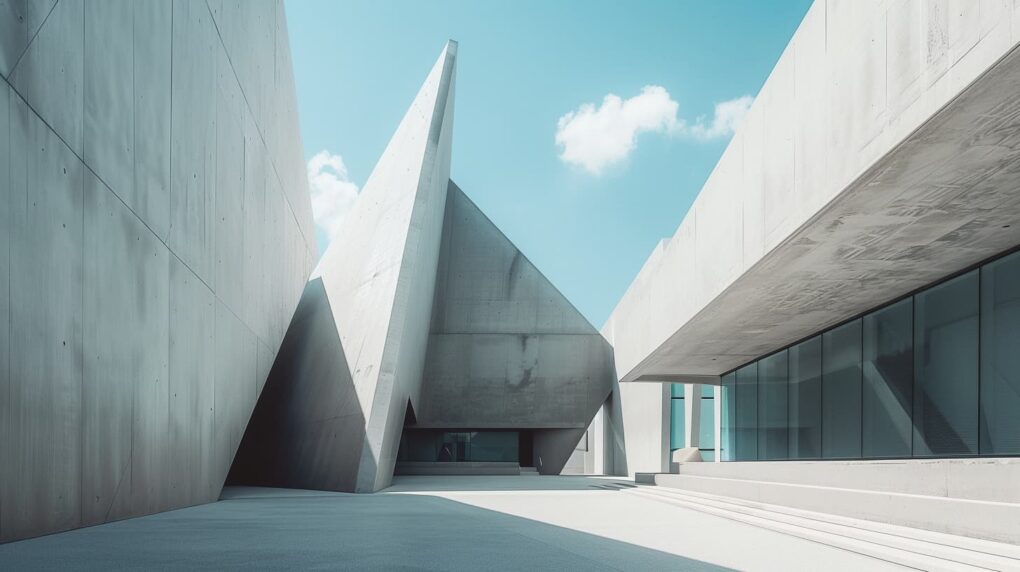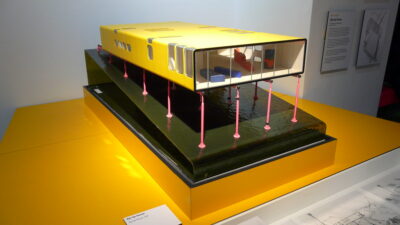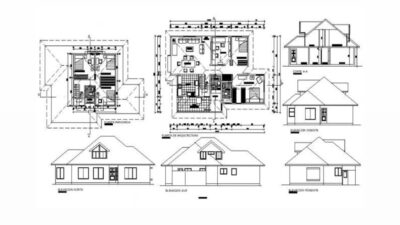Minimalism in architecture is not just the rejection of excessive decoration, but an entire philosophy that fundamentally changed the perception of space and the structure of buildings. The rejection of overload and emphasis on the purity of forms became the basis of a new approach to design, where every detail matters. The influence of minimalism has deeply penetrated into modern architectural practices, becoming not only a style, but also a way of human interaction with the surrounding world. Let’s find out how this trend has shaped the image of modern megacities and what ideas it has brought to the architectural heritage of the 21st century.
The influence of minimalism on architecture
Minimalism in architecture, which became popular in the middle of the XX century, continues to actively influence the appearance of modern cities and buildings. Its basic idea is to focus on the essence, simplifying forms and getting rid of everything superfluous. This approach emphasizes functionality and harmony of space, which was a significant step forward in the development of architecture.
Basic principles of minimalism in architecture
- Simplicity of forms and lines
Minimalism eschews intricate and ostentatious adornments, privileging instead clean, unembellished forms. The paramount objective lies in cultivating harmony through the judicious use of simplicity and pared-down components, ensuring the structure is both aesthetically compelling and pragmatically efficient.
- Use of natural materials
Natural materials—wood, concrete, glass, and stone—have increasingly become quintessential elements within minimalist design. These substances not only underscore the aesthetic of simplicity but also infuse the space with warmth, imbuing it with an organic quality that transcends time. They preserve the integrity of their inherent textures and hues, fostering a seamless connection with nature while evoking timeless resilience.
- Open spaces
Minimalism champions expansive, uncluttered environments, unburdened by superfluous partitions or walls. This design philosophy cultivates an atmosphere of lightness and liberation, enabling the optimal utilization of available space and enhancing its functional potential. By eliminating extraneous elements, it fosters a sense of openness and fluidity, where every inch serves a purposeful role.
- Functionality
Each element in a building should not just be an aesthetic addition, but should fulfill a specific function. This approach minimizes excess and focuses on providing maximum utility and convenience, enhancing not only the appearance but also the internal feel of the space.
History of minimalism in architecture
Origins and development
Minimalism in architecture emerged as a reaction to the overload of decorative elements and complexity of form inherent in earlier styles such as Baroque and Eclecticism. Inspired by modernism, which strove for utilitarianism and simplicity, minimalism went further by getting rid of everything superfluous and focusing on purity of form and functionality. The style began to develop in the 1950s, especially in Japan, where the philosophy of “insufficiency” and simplification resonated culturally. Japanese architecture with its emphasis on emptiness and harmony had a great influence on Western architects of the time.
The 60s and 70s: Minimalism as part of the international style
In the 1960s and 70s, minimalism became central to the International Style, spreading across the West. Architects like Ludwig Mies van der Rohe, with designs such as the glass Villa Weiss, embodied simplicity and functionality. John Pawson, a key figure in interior design and architecture, expanded the movement by emphasizing the importance of emptiness and space as core design elements.
Minimalism and its influence on modern cities
Today, minimalism is actively used not only in private homes, but also in public buildings such as offices, museums and cultural centers. This style helps to create calm and harmonious spaces in cities, reducing visual and psycho-emotional stress. In the context of urbanization and dense buildings, minimalism contributes to the creation of clean, functional spaces that meet modern requirements of energy efficiency and sustainability.

How has minimalism changed modern architecture?
- A focus on quality over quantity
Minimalism emphasizes high quality and detail rather than scale and excessive decoration. Architects began to choose materials with special attention to their texture, strength and durability, creating buildings where every element matters. This increased the aesthetic value and functionality of the space, while minimizing unnecessary details and embellishments.
- Technological innovations
Modern minimalist buildings actively utilize advanced technologies such as energy-efficient facades, passive solar heating systems and smart control systems. These innovations improve the sustainability of buildings, reduce energy costs and increase comfort. Modern materials such as insulating glass and high-quality coatings make elegant but energy-efficient structures possible.
- Psychological aspect
Minimalism has a positive effect on the psycho-emotional state. The simplicity of forms and the absence of unnecessary elements in interiors create a sense of order and lightness, which helps to reduce stress and improve concentration. Spaces devoid of visual overload help people feel more relaxed and harmonious, making minimalist interiors popular in both residential and public spaces.
- Environmental sustainability
Minimalism aligns with environmental sustainability by incorporating natural, durable materials like wood and stone. The integration of energy-efficient technologies, such as solar panels and advanced heat exchange systems, fosters buildings that are not only visually striking but also eco-friendly. This approach reduces operational costs and carbon emissions, making minimalism a design choice that is both aesthetically refined and environmentally responsible.
The benefits of minimalism in architecture
- Space optimization
Minimalist buildings are often designed with open and functional plans, making the most of every square meter. Spaces become multifunctional, which is especially important in modern metropolitan areas where every corner counts. The absence of partitions and superfluous elements makes the interior flexible, allowing it to be adapted to different needs and tasks. As a result, minimalist projects create a feeling of space and freedom without overloading the interior.
- Peace and harmony
Simplicity and clarity in minimalist architecture foster both visual and emotional harmony. Rooted in the concept of a “pure” space, minimalism cultivates tranquility and alleviates stress. By removing superfluous decorations, it directs attention to life’s essentials, crafting an environment that is both serene and conducive to well-being. This design philosophy also facilitates the seamless integration of buildings into natural landscapes, forging a harmonious connection between the constructed and natural worlds.
- Durability
The clean and neutral nature of minimalist design contributes to the longevity of such buildings, as they are less susceptible to fashion trends and excessive decoration that can become outdated. Simple forms and functional solutions remain relevant for decades, allowing minimalist buildings to retain their appeal even over time. The use of natural and durable materials such as concrete, glass and wood also contributes to their longevity and ability to withstand the effects of time and the environment.
Minimalism in architecture’s future
The future of minimalism in architecture will evolve through the integration of advanced technologies and sustainable materials, resulting in more energy-efficient, functional, and environmentally conscious structures. As the style adapts to contemporary demands, it will incorporate smart control systems and eco-friendly materials, enhancing its sustainability. A key focus will be the creation of flexible, multifunctional spaces that accommodate the growing needs of remote work and shifting lifestyles. Despite these innovations, minimalism will remain anchored in its core principles of simplicity, functionality, and reverence for space, ensuring its enduring relevance in the architectural landscape.











